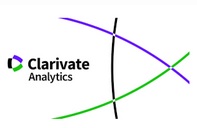Detecting underreport in real-world assessment contexts. The utility of multiple-scale indicators
Abstract
Underreport of symptoms and personality characteristics is a relevant problem for psychological assessment. Nevertheless, most of the studies in this field use simulation designs. This study aims at comparing underreport prevalence in real-world samples of different contexts, using single-scale and multiple-scale underreport indicators from the Minnesota Multiphasic Personality Inventory–2 (MMPI-2) to identify the best one and assess its implications on the clinical scales scores. Using a Differential Prevalence Group design, 1438 participants were assessed with the MMPI-2, grouped in three samples from two non-clinical contexts (community and organizational) and one clinical context. The organizational sample had the highest prevalence of underreporting. Overall, multiple-scale indicator LKS ≥ T65 performed better at distinguishing these samples. Analysis of variance revealed that LKS ≥ T65 was also the only indicator in which participants doing underreport consistently varied from honest responders in the clinical scales scores, while also having lower probability of producing both type I and II errors. The existence of underreport has clear implication on the clinical scales results. The multiple-scale indicator is the most robust and should be used in the detection of underreporting. This is a relevant implication for psychological assessment in different contexts, mainly in the organizational context.
Downloads
-
Abstract873
-
pdf478
References
Archer, R. P., Handel, R. W., & Couvadelli, B. (2004). An evaluation of the incremental validity of the MMPI-2 Superlative (S) scale in an inpatient psychiatric sample. Assessment, 11(1), 102-108. https://doi.org/10.1177/1073191103257396
Baer, R. A., & Miller, J. (2002). Underreporting of psychopathology on the MMPI-2: A meta-analytic review. Psychological Assessment, 14(1), 16-26. https://doi.org/10.1037/1040-3590.14.1.16
Bagby, R. M., Nicholson, R. A., Buis, T., Radovanovic, H., & Fidler, B. J. (1999). Defensive responding on the MMPI-2 in family custody and access evaluations. Psychological Assessment, 11(1), 24-28. https://doi.org/10.1037/1040-3590.11.1.24
Bathurst, K., Gottfried, A. W., & Gottfried, A. E. (1997). Normative data for the MMPI-2 in child custody litigation. Psychological Assessment, 9(3), 205-211. https://doi.org/10.1037/1040-3590.9.3.205
Ben-Porath, Y. S. (2013). Self-report inventories: Assessing personality and psychopathology. In I. B. Weiner (Series Ed.), J. R. Graham & J. A. Naglieri (Vol. Ed.), Handbook of psychology: Vol. 10. Assessment psychology (2nd ed., pp. 622–644). Wiley.
Butcher, J. N., Graham, J. R., Ben-Porath, Y. S., Tellegen, A., Dahlstrom, W. G., & Kaemmer, B. (2001). MMPI–2 (Minnesota Multiphasic Personality Inventory–2): Manual for administration, scoring, and interpretation (Revised ed.). University of Minnesota Press.
Chantler, L., & Lushington, K. (2016). The impact of coaching on faking-good/under-Reporting on the PAI. Psychiatry, Psychology and Law, 23, 29-36. https://doi.org/10.1080/13218719.2015.1026867
De Lorenzo, M. (2013). Employee mental illness: Managing the hidden epidemic. Employee Responsibilities and Rights Journal, 25, 219–238. https://doi.org/10.1007/s10672-013-9226-x
DeVylder, J. E., & Hilimire, M. R. (2015). Screening for psychotic experiences: Social desirability biases in a non-clinical sample. Early Intervention in Psychiatry, 9(4), 331–334. https://doi.org/10.1111/eip.12161
Ellison, M. L., Russinova, Z., MacDonald-Wilson, K. L., & Lyass, A. (2003). Patterns and correlates of workplace disclosure among professionals and managers with psychiatric conditions. Journal of Vocational Rehabilitation, 18, 3–13.
Graham, J. R. (2012). MMPI-2: Assessing personality and psychopathology (5th ed.). Oxford University Press.
Hahn, J. (2005). Faking bad and faking good by college students on the Korean MMPI-2. Journal of Personality Assessment, 85, 65–73. https://doi.org/10.1207/s15327752jpa8501_06
Mazza, C., Monaro, M., Burla, F. Colasanti, M., Orrù, G., Ferracuti, S. & Roma, P. (2020). Use of mouse-tracking software to detect faking-good behavior on personality questionnaires: An explorative study. Scientific Reports, 10:4835. https://doi.org/10.1038/s41598-020-61636-5
Roma, P., Mazza, C., Mammarella, S., Mantovani, B., Mandarelli, G., & Ferracuti, S. (2019). Faking-good behavior in self-favorable scales of the MMPI-2: A study with time pressure. European Journal of Psychological Assessment, 36, 250–258. https://doi.org/10.1027/1015-5759/a000511
Wygant, D. B., Walls, B. D., Brothers, S. L., & Berry, D. T. R. (2018). Assessment of malingering and defensiveness on the MMPI-2 and MMPI 2 RF. In R. Rogers & S. D. Bender (Eds.), Clinical assessment of malingering and deception (pp. 257–279). The Guilford Press.
Ziegler, M., MacCann, C., & Roberts, R. (2011). Faking: Knowns, unknowns, and points of contention. In M. Ziegler, C., MacCann, & R. Roberts (Eds.), New perspectives on faking in personality assessment (pp. 3-18). Oxford University Press.
Copyright (c) 2022 Servicio de Publicaciones, University of Murcia (Spain)

This work is licensed under a Creative Commons Attribution-ShareAlike 4.0 International License.
About Copyright and Licensing, more details here.










